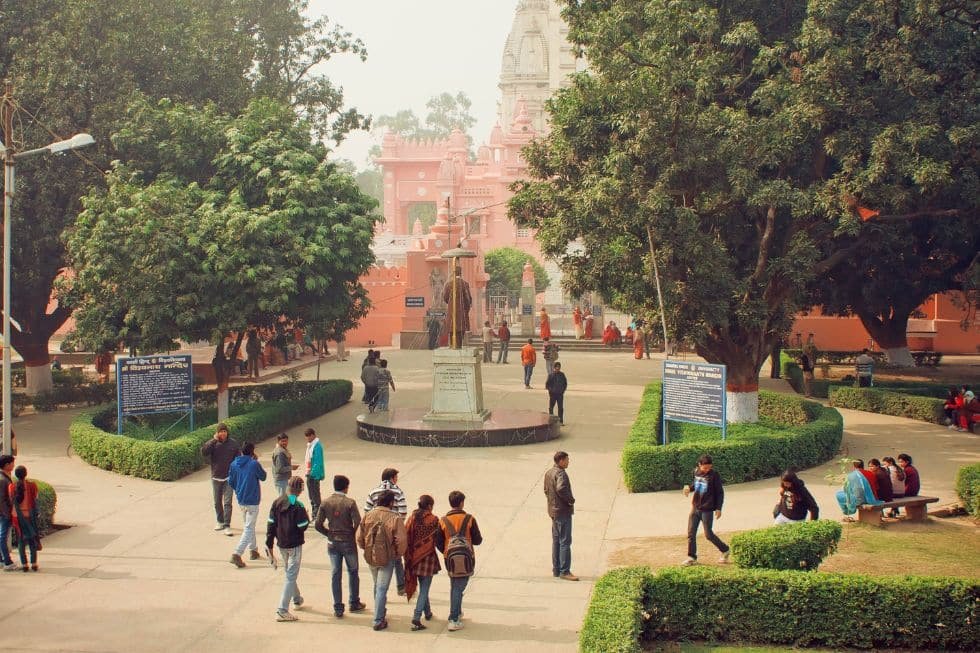The debate on India’s higher education is no longer about whether the country needs reforms, but about how fast policymakers can implement them and at what scale. India’s demographic dividend is unmatched, with 65% of its 1.4 billion people below the age of 35. Yet, the Gross Enrollment Ratio (GER) in higher education stands at only about 27.1% in 2020, far lower than the levels in advanced economies.
The National Education Policy (NEP) 2020 has set the ambitious goal of increasing the GER from 26.3% in 2018 to 50% by 2035. Achieving this target will require an unprecedented expansion of India’s education system. For the international community, this is not just India’s challenge; it is a global opportunity. Western higher education systems can benefit by partnering with India in ways that are mutually transformative.
A growing demand fueled by aspirations
India has over 265 million school-going children, representing the largest cohort of future learners anywhere in the world. Yet, only one in four students makes it to higher education. This narrowing of the pyramid is not due to a lack of interest, but due to limited capacity in India and the consequent lack of opportunities. As family incomes rise and aspirations expand, more Indian parents are willing to invest in education on a global scale.
The numbers are telling. In 2022, over 750,000 Indian students went abroad for higher studies, a big jump compared to 450,000 in 2017 and 260,000 in 2020. Furthermore, India surpassed China as the top source of international students in the US in 2022. Indian families are projected to spend nearly $70 billion annually on foreign education in 2025. These numbers underscore both the pressure on India’s system and the enormous opportunities for international institutions.
This outflow is no longer confined to the urban elite. Families in Tier I and Tier II cities — this is a classification of urban areas on the basis of factors like the size of the population and economic development — are increasingly investing in overseas education. For international universities grappling with declining enrollments at home, India offers an unrivaled opportunity to service a huge demand for higher education. India not only offers sheer numbers to these institutions but also the opportunity to offer diverse disciplines, interdisciplinary training and innovation-led learning experiences.
Partnership models for a sustainable future
Expanding India’s system to meet a 50% GER by 2035 will require doubling the number of students in higher education. No country has attempted such a massive scale-up in such a short time. Partnerships with international institutions will be critical to meeting this challenge. Given the long-term nature of higher education, these partnerships cannot be transactional. Both international and Indian institutions must work together to build sustainable ecosystems that serve both India and the global community.
One such pathway is the 2+2 model pioneered by Birla Institute of Technology & Science (BITS) Pilani and other forward-looking institutions. In this model, students complete the first two years of their undergraduate studies in India and their next two at a partner university abroad.
“This model gives students international exposure while being more affordable than a foreign degree.. It also gives them both an academic grounding in India and a global exposure. Even international universities benefit. The 2+2 model reduces the cost of student recruitment for these universities as well as gives them a steady flow of well-trained Indian students.
Joint PhD programs run by both Indian and Western institutions represent another area of promise. Training PhDs is resource-intensive, often requiring significant investments in infrastructure and faculty time. Through joint PhD programs, Western institutions can share costs with their Indian partners and leverage expertise across geographies. Students can benefit from access to world-class labs abroad while working on problems relevant to India. For global universities, such collaborations create bridges to fast-growing research ecosystems and open up avenues for innovation-led partnerships.
These models also address a deeper challenge: creating financial sustainability in higher education. Undergraduate tuition can subsidize doctoral training when designed carefully. By linking undergraduate pathways with doctoral opportunities, universities can build systems where costs are distributed, risks are shared and outcomes are amplified. Industry in both partner countries will also find value in these collaborations, since the research projects can be aligned with their innovation pipelines.
In joint PhD programs, faculty members from two universities engage in guiding the same student, thereby creating deeper academic linkages. With shared supervision, access to dual infrastructure and sponsorships that are jointly supported, the financial burden on individual institutions or students is often significantly reduced. Joint programs are not only viable for India; they can serve as a global template for sustainable higher education PhD student financing.
Scaling research and innovation through global coalitions
India’s researcher density remains among the lowest in the world. With fewer than 300 researchers per million people, India lags far behind advanced economies. The US has more than 4,000 researchers per million, Germany over 5,000 and South Korea above 7,000. This disparity explains why India’s contribution to high-impact research is still modest relative to its population size and economic potential. Bridging this gap requires building a robust research culture and scaling the pipeline of trained scientists.
International collaborations are the most effective way to accelerate this process. Joint research centers, co-funded PhD programs and collaborative grants can pool resources and expand impact. Undergraduate programs linked to international research pathways in top institutions such as Cambridge, MIT and Caltech have ensured a regular supply of motivated students entering doctoral training. From experience, we know this integration works. In fact, it creates a virtuous cycle where education and research feed into one another, sustaining long-term growth.
Global universities also stand to gain. Many Western institutions face declining domestic enrollments, financial pressures and rising costs of research. Partnering with India provides access to a vast talent pool, opportunities for cost-effective collaboration and entry into one of the world’s most dynamic markets. For India, these partnerships help build the critical mass of researchers required to compete globally in areas such as artificial intelligence, semiconductors, climate science and health technologies.
India as a global anchor for higher education
India’s higher education system is poised for a historic transformation. The aspirations of its young population, the willingness of families to invest and the urgency of scaling the system create both challenges and opportunities. For international institutions, the message is clear: engaging with India is no longer optional; it is essential. The models of collaboration Indians are developing, including my institution, BITS Pilani — 2+2 undergraduate programs, joint PhDs and shared research initiatives — are not only solutions to India’s problems but also global innovations in higher education.
If India succeeds in reaching a GER of 50% by 2035, it will add tens of millions of students to its higher education system. This will be the largest expansion of higher education in human history. No single country can achieve this alone. It will require a coalition of global partners who see education not only as a national priority but as a shared global mission. Investing in India’s educational growth means investing in the future of global knowledge itself.
[Members of Fair Observer’s Young Editors Program collectively edited this piece.]
The views expressed in this article are the author’s own and do not necessarily reflect Fair Observer’s editorial policy.
Support Fair Observer
We rely on your support for our independence, diversity and quality.
For more than 10 years, Fair Observer has been free, fair and independent. No billionaire owns us, no advertisers control us. We are a reader-supported nonprofit. Unlike many other publications, we keep our content free for readers regardless of where they live or whether they can afford to pay. We have no paywalls and no ads.
In the post-truth era of fake news, echo chambers and filter bubbles, we publish a plurality of perspectives from around the world. Anyone can publish with us, but everyone goes through a rigorous editorial process. So, you get fact-checked, well-reasoned content instead of noise.
We publish 3,000+ voices from 90+ countries. We also conduct education and training programs
on subjects ranging from digital media and journalism to writing and critical thinking. This
doesn’t come cheap. Servers, editors, trainers and web developers cost
money.
Please consider supporting us on a regular basis as a recurring donor or a
sustaining member.
Will you support FO’s journalism?
We rely on your support for our independence, diversity and quality.








Comment